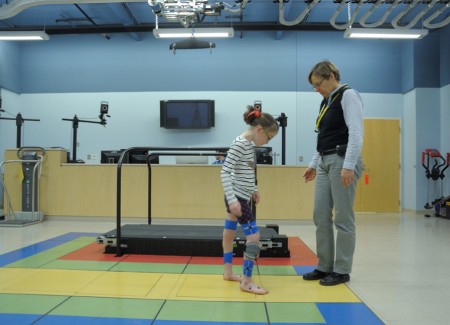Commonly referred to as CP, Cerebral Palsy is a group of neurological disorders that affects coordination and movement. It appears in the childhood and is accompanied by a number of signs and symptoms. According to OB/GYN practitioners, there are 4 main types of CP: spastic, dyskinetic, ataxic and mixed. Spastic has been reported as the most common type, affecting at least 75% of the people with the condition.
Read on to see what you need to know about Cerebral Palsy.
Cerebral Palsy is caused by brain damage or abnormal fetal development
 The brain damage or abnormalities usually arise from infections caught by the mother, a premature or difficult birth, bleeding in the brain or gene mutations in the brain. The disorder can also be caused by non-brain conditions such as placenta problems, low birthweight, birth defects, Caesarean section, low blood sugar, seizures after birth and respiratory distress syndrome.
The brain damage or abnormalities usually arise from infections caught by the mother, a premature or difficult birth, bleeding in the brain or gene mutations in the brain. The disorder can also be caused by non-brain conditions such as placenta problems, low birthweight, birth defects, Caesarean section, low blood sugar, seizures after birth and respiratory distress syndrome.
CP symptoms vary among people
The symptoms also become clear during the first 3 years of the child’s life. During the first 6 months, the child feels stiff & floppy, seems to have an overextended neck & back and behaves like he/she is pushing away from the one holding him or her. Other symptoms during these months include head that fall backwards and stiff or cross/scissors legs.
Between 6 months and 1 year, the child has difficulties rolling over in either direction or bringing his/her hands together or to the mouth. What you need to know about Cerebral Palsy symptoms for kids above 1 year is that he/she has difficulties crawling or standing with support.
Cerebral Palsy does not have a cure
This can be quite disappointing to parents with children who are affected by this condition. However, some therapies can help manage the condition. According to therapists, physical, speech, water and occupational therapies can help the patient. These therapies can be boosted by medications such as diazepam, botulinum toxin, anticonvulsants and bisphosphonates. Other ways to manage CP include: surgery to correct muscle abnormalities, orthotic devices to support limbs and using rolling walkers.
CP can be prevented through electronic fetal monitoring
 According to the American College of Obstetricians & Gynecologists, electronic fetal monitoring helps identify unborn babies that are at the risk of developing the neurological disorder. If the risk has been identified, magnesium sulphate can be used to lower it. Cooling full-term babies who have a high risk can reduce the symptoms if the child develops the disorder.
According to the American College of Obstetricians & Gynecologists, electronic fetal monitoring helps identify unborn babies that are at the risk of developing the neurological disorder. If the risk has been identified, magnesium sulphate can be used to lower it. Cooling full-term babies who have a high risk can reduce the symptoms if the child develops the disorder.
For more info, take a look at cerebral palsy news articles.

